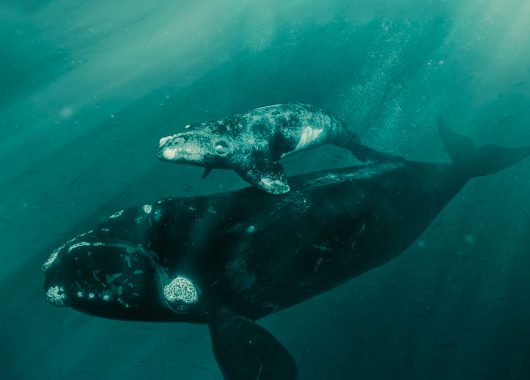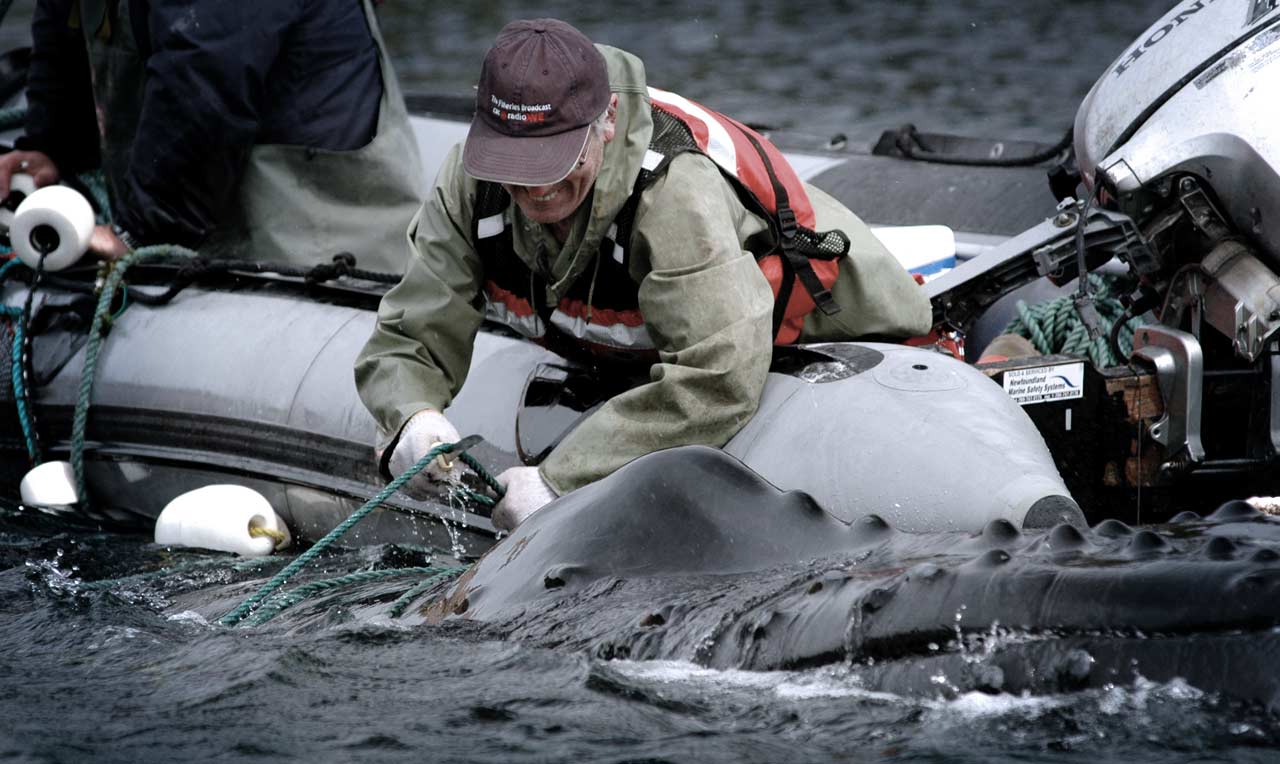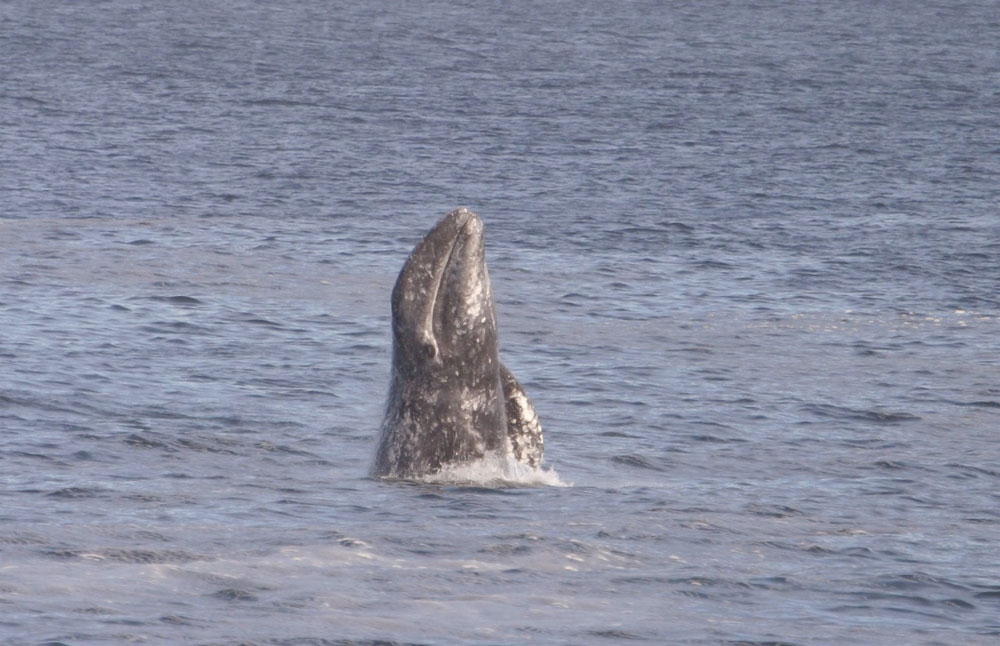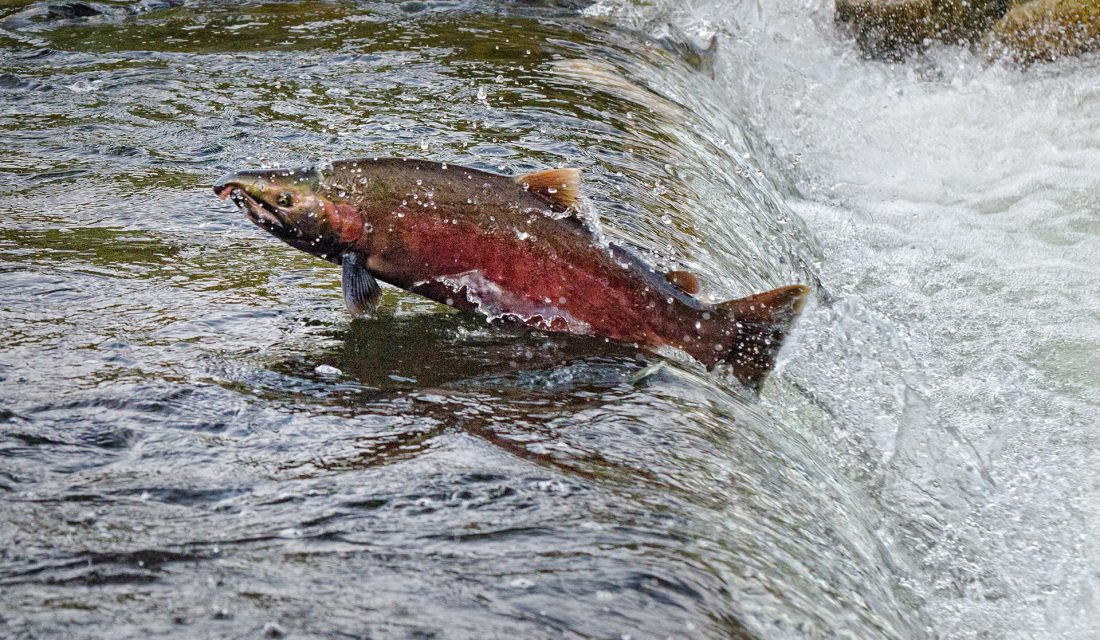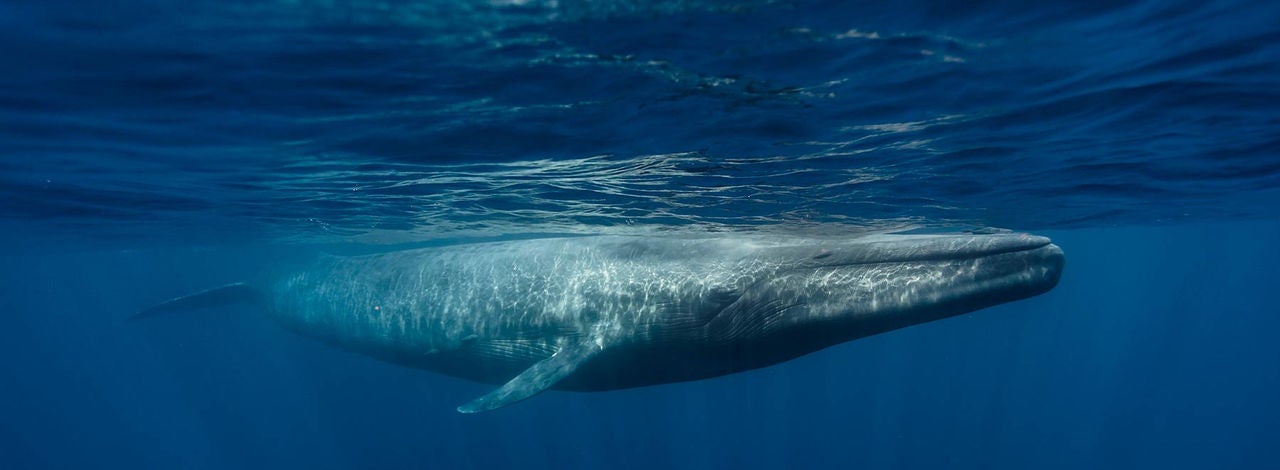The Threat
Fishing gear can harm so many kinds of aquatic animals – from North Atlantic Right Whales to freshwater turtles. That said it is important to note that anglers and commercial fisheries are not intending to harm wildlife. For commercial fish harvesters, they are simply trying to make a living while supporting other sectors like seafood buyers and processors, restaurants, and more! Moreover, both anglers and commercial fish harvesters are not oblivious to these problems and most recognize the need to address them, in the interest of being good stewards, good business, and ensuring the sustainability of the natural resource. Sadly, accidents happen.
Entanglement
Entanglement, for example, is one of the greatest threats fishing gear poses on aquatic animals. Sea lions can accidentally become entangled in fishing gear or debris, resulting in lacerations, infections and death by strangulation or starvation. The same fate is faced by many other marine animals from sea turtles to seals and whales to seabirds.
Entanglement is also a severe threat to the critically endangered North Atlantic Right Whale. Approximately 25 per cent of the remaining population are entangled in commercial fishing gear annually, and a whopping 83 percent show scarring from entanglement in fishing gear. While some swim away with only minor scars, others die a terrible death. When North Atlantic Right Whales are badly entangled and cannot escape their binding, they can drown or suffer from starvation and significant injuries for months on end before succumbing to their wounds.
But fishing gear does not only pose a threat to marine animals. Freshwater creatures like turtles can also fall victim to fishing gear. Many freshwater turtles like Snapping, Northern Map, Painted, Spiny Softshell and Wood Turtles will keep an eye out for live prey and can accidentally get caught on baited fishing hooks. Sadly, hooks that are caught in the mouth or swallowed can kill turtles and considering that all eight of Canada’s freshwater turtles.
What CWF is Doing
Assessing Entanglement Risk for Atlantic Canada Whales
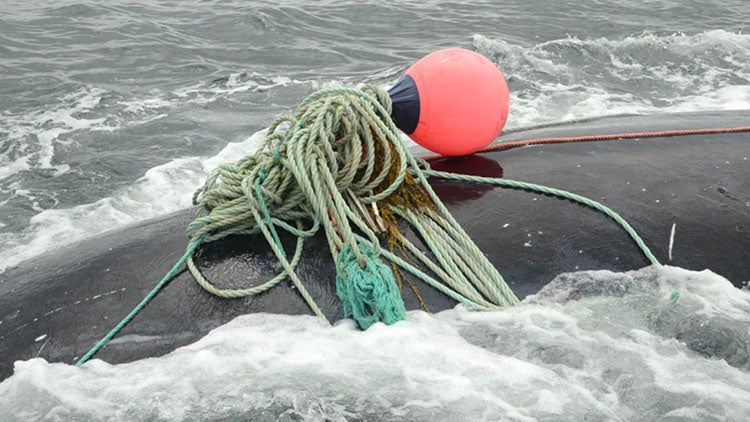
- CWF is working to understand the consequences that commercial fisheries management can have on conservation of at-risk marine species. This work will provide a basis to improve future decisions made to promote species at risk recovery. CWF is developing methods to predict the locations of whales and their threats to guide management efforts that will reduce these risks.
Effectiveness of Snow Crab Fishery Closures in Gulf of St. Lawrence
Our researchers conducted a study that looked at how temporary fishing closures helped protect the North Atlantic Right Whale between 2018 and 2021. The team found that the closures reduced the risk of whale entanglement by about 62 per cent each year.
Entanglement Risk in the Lobster Fisheries throughout the Maritimes
After a North Atlantic Right Whale was found entangled in lobster gear in Canada’s Scotian Shelf waters in 2023, CWF researchers decided it was especially important study the risk that lobster fishing posed to the North Atlantic Right Whale. The vertical buoy line is considered the greatest risk component that can lead to entanglement for large whales. The study aimed to supplement ongoing North Atlantic Right Whale risk assessment work by specifically assessing the entanglement risk from the lobster fishery in Canadian waters between 2015 and 2021. They found that the greatest risk of entanglement is concentrated in the Gulf of St. Lawrence compared to the Scotian Shelf and Fundy region. Across the study, the risk appeared consistent from 2015 to 2021. In 2021, the greatest risk in months with whale presence was in May and June which aligns with the highest buoy line densities observed.
CWF is also beginning to conduct additional studies such as looking at the entanglement risk posed by lost, abandoned or discarded gear (called ghost gear). Moreover, we are exploring how different management options can impact risk reduction (e.g. fishing with on-demand gear instead of traditional fishing gear).
Learn more >
Lending New Technology Gear
- Funded by Fisheries and Oceans Canada’s Whalesafe Gear Adoption Fund (WSGF), the CanFISH Gear Lending Program is a project developed by the Canadian Wildlife Federation in collaboration with industry partners. The purpose of the program is to partner with fisheries associations and fish harvesters to trial different gear adaptations, including weak gear andon-demand devices as well as other relevant technologies), and evaluate their suitability for fisheries. Weak gear equipment has weaker rope to help avoid entanglement and rope-on-demand fishing eliminates all vertical lines in the water by holding endlines and buoys at the seafloor with a trap or trawl. The gear is provided free of charge, and harvesters are given training and ongoing support throughout the trials. CWF will guide data collection and will distribute final analyses back to the association/harvester and to Fisheries and Oceans Canada.
Thus far this program has helped 32 fish harvesters catch over 340,000lbs of Snow Crab using on-demand gear.
Learn more >
Powerful Partnerships
- We have also partnered with the University of New Brunswick to conduct glider-based surveys of large whales and presence of prey aggregations in the Gulf of St. Lawrence. The data scientists collect will help us to better predict where whales will appear and what they are doing in these locations.
Finally, we have partnered with Dalhousie University and CWF’s Endowed Chair, Sarah Fortune, who is leading important work to protect whales in Canadian waters. She focuses on key areas like Baffin Bay–Davis Strait and the Gulf of St. Lawrence, using the latest technology to tackle urgent conservation issues and help guide smart policy decisions.
Dr. Fortune uses special tracking tags and drones to follow whale movements, helping us understand how whales are affected by things like climate change and human activity. She also works with partners, including the University of Wisconsin, to study what whales eat by collecting underwater samples and mapping out food sources. Her work is supported by Defense Research and Development Canada (DRDC), and includes using sonar and underwater microphones to study how ocean noise affects whale behaviour.
Learn more >
Unifying Marine Response Networks
- The Canadian Marine Animal Response Alliance unifies and supports Canada’s regional marine response networks, to encourage the sharing of expertise and resources, and address critical gaps in the ongoing operation of the networks. CMARA is chaired and coordinated by the Canadian Wildlife Federation and is governed by representatives of each regional organization: Newfoundland and Labrador; Maritime provinces; Quebec, and British Columbia, as well as representative of Fisheries and Oceans Canada (DFO).
Learn more >
Offering Turtle and Fishing Hook Resources to Anglers
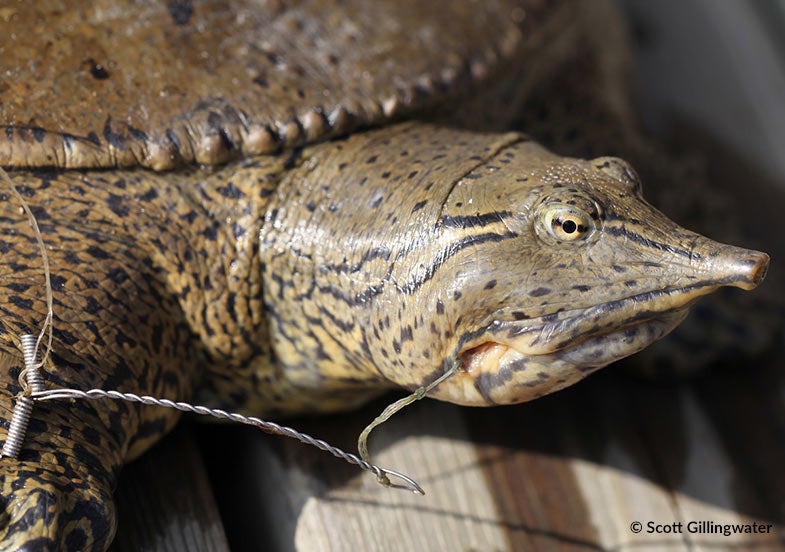
- CWF has created posters to educate anglers about what to do if a turtle is accidentally hooked. The poster provides some brief tips on what to do and the location of animal rehabilitation centres that will take in turtles to remove the hooks. To date, we have created posters for Ontario, Quebec, Manitoba and British Columbia.
Learn more >
Awarding Youth for Repurposing Plastic Fishing Gear
-
In 2023, Natalie McIntosh received the Wade Luzny Youth Conservation Award for her work to repurpose abandoned fishing equipment. Profits from the sale of creative products on her Etsy store, Nautical Waters, are donated back to the cause.
Learn more >
Finding the Whales

- We have also partnered with the University of New Brunswick to conduct glider-based surveys of large whales and presence of prey aggregations in the Gulf of St. Lawrence. The data scientists collect will help us to better predict where whales will appear and what they are doing in these locations.
Learn more >
Expansion to the West Coast
- We’ve recently expanded our whale conservation efforts to British Columbia through the new BC Whales Program. This initiative aims to mirror much of the work we’re doing on the East Coast, but focused on Pacific species. So far, we’ve begun preliminary entanglement risk assessments to identify high-risk areas for Grey Whales and Humpback Whales. We’re also building relationships with harvesters and have completed approximately 90 hours of boat time conducting gear trials. In addition, we’ve started processing Automatic Identification System (AIS) data to carry out a vessel.
Finding the Whales

- We have also partnered with the University of New Brunswick to conduct glider-based surveys of large whales and presence of prey aggregations in the Gulf of St. Lawrence. The data scientists collect will help us to better predict where whales will appear and what they are doing in these locations.
Learn more >
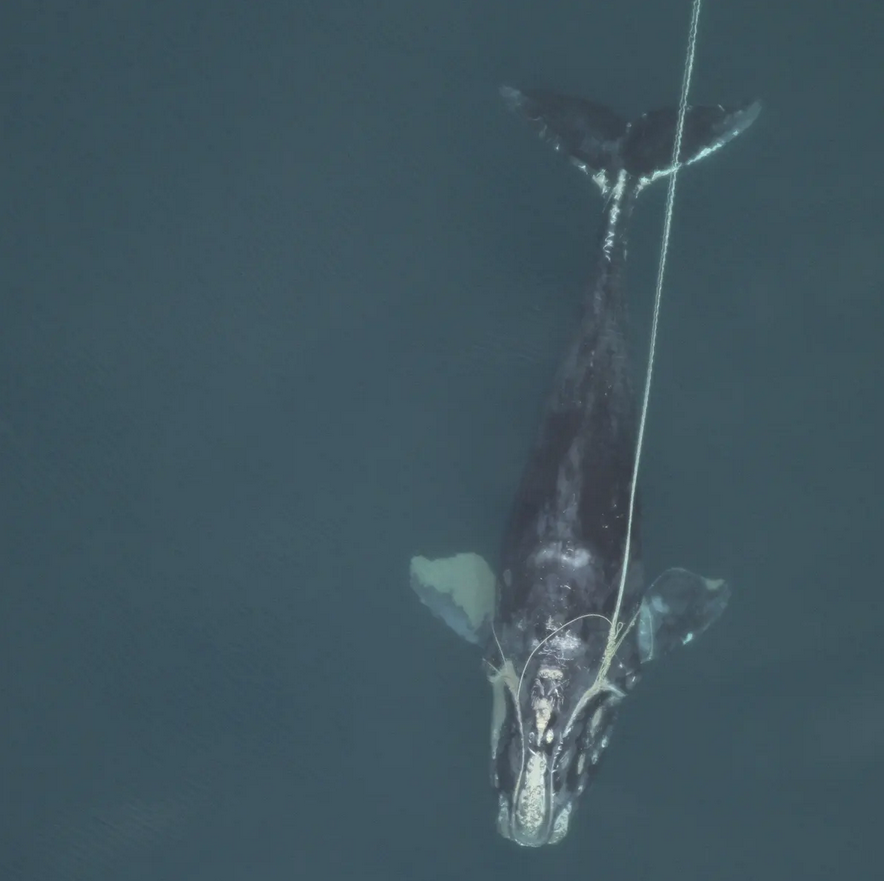
Speak Up for Water & Wildlife
This Parliamentary Committee on Fisheries and Oceans will be reconvening soon. We at the Canadian Wildlife Federation believe that the Fisheries Act needs to be more effective on how it protects water and wildlife.
Canada’s wildlife can’t speak for themselves, so it’s up to us to speak up for them. We’re asking you to add your voice today. Let the Parliamentary Committee on Fisheries and Oceans know that you care deeply about our waterways and wildlife.
Already added your voice? You can still help!
Pledge to make fishing safer for wildlife
If you fish recreationally
They’re easier to remove if you ever catch a turtle.
If the hook is difficult to remove (any hook in a turtle’s mouth is difficult to remove), bring the turtle to a rehab centre. Please note that a hook in the webbing of a foot might be straight forward to remove, but certainly anything in the mouth should go to a rehab centre.
Never dispose your fishing line or nets in the water. They could entangle, maim, injure or even kill wildlife – from birds to fish. Make sure you grab your gear and dispose of it properly – on land.
You can post at your favourite fishing spot to help educate other anglers about what to do if they hook a turtle and where to take a hooked turtle, if you live in Ontario, Manitoba or BC.
About You
Province/Territory


